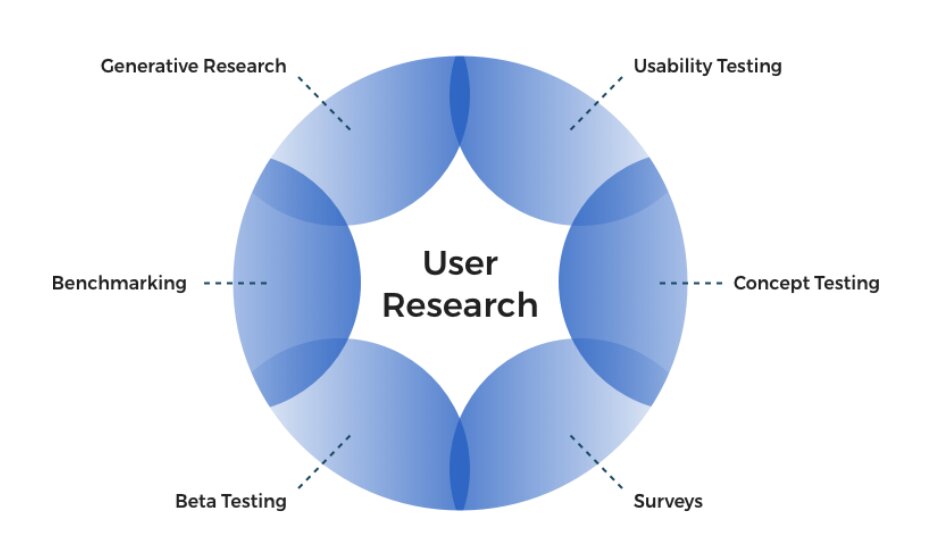Career Tips
Understanding What User Research Is

What Is User Research?
User research is a collection of information about customer habits, desires, market analysis, and motives to purchase products. It also shows the various ways in which an audience can provide feedback to the firm from which they purchased.
A user experience (UX) designer typically conducts user research to determine the optimal design for a client’s website or smartphone app. Surveys, focus groups, and interviews are among approaches for doing research to determine the return on investment (ROI) of a design that was released to the general market.
Advantages of user research:
Data gathered through user research provides insight into your target audience’s perspective. Here are some of the advantages that demonstrate the significance of user research:
- Comparing qualitative and quantitative data: To assess the research’s quality, user research employs methods utilized in both qualitative and quantitative studies. Qualitative research collects non-numerical data through practices such as creating user personas, working with various scenarios, and content analysis, whereas quantitative data focuses on the numbers behind a design’s impact, such as an increase in organic traffic and social media traffic. User research provides you with a strategy for not just acquiring data but also determining how to assess the data you collect to ensure improved performance.
- Consolidates time to create designs: User research also assists you in finding the relevant designs that resonate with your target audience. You can also spend more time making improvements by finding out if the user is enjoying their interaction with your content and if your company or client is earning favorable feedback on the content before looking to expand marketing efforts. You must get direct and in-person feedback, so their advice for improvement is more meaningful to the goal you’re trying to accomplish.
- Streamlines the review process for past designs: When you take the time to evaluate earlier designs, you can use quantitative data to determine the exact ROI a company gained from a design associated with their marketing and advertising campaigns. This data can be used as a key performance indicator (KPI) to determine whether you have achieved success or if the interface’s design and functionality need to be improved to make it more user-friendly. Make sure that all designers and developers have access to this data so that when changes are made, everyone is on the same page.
Disadvantages of user research:
It is also critical to understand the downfalls of user research, such as these aspects:
- This is not a product review. User research is typically focused on the performance of design implementation rather than product quality, particularly if it is manufactured. Users may intend to use the website as a platform to discuss the product, so keep an eye on your email inbox in case clients decide to contact your organization directly. The sole exception to this rule is when a website is deemed a “product,” in which case your web developers must be particularly cautious with user research methodologies in order to enhance revenues and client retention rates.
- It is not a strategy. The concept of user research does not provide a design plan. Instead, user research gives you with the skills and resources you need to implement the design in a way that is relevant to your target audience. The essential takeaway here is that you can’t target every demographic, but user research may help you determine whether you’re attracting the correct people to interact with your design. The functioning of your website should be consistent with the intended impact.
How to conduct user research:
Here are four steps you can follow to properly conduct user research:
1. Identify KPIs that show your design is successful
KPIs display the measurements that track performance over a specified period. Be sure to note the period of time in which you’re measuring the KPI to get accurate results. Before you proceed with user research, determine which KPIs measure the success of your design. A few KPIs to consider include:
- Website visitors
- Mobile traffic
- SEO rank
- Click-through rates
- Customer retention and satisfaction
2. Select and perform quantitative and qualitative research methods
Choose which methods you will use to assess the success of your KPIs. You should have a mix of qualitative and quantitative data to determine whether the numbers match the behavior of your target audience when using the interface.
For example, user persona research reveals a frequent visitor to your website: Bill, a 40-year-old teacher from Madison, Wisconsin, is married with two children and uses technology at work and home to help him mark papers and stay on track with his lesson plan. You can construct designs aimed at this persona to see if the number of website visits (qualitative research) improves over the course of six months. If you want to improve website traffic, you may need to broaden your target audience to include a younger demographic.
3. Compare results to different designs
Try different designs to see if there is a discernible difference in quantitative results. However, it is critical to establish a timeframe for both design production and testing. Segmenting your time allows you to investigate the digital impact of visitors who visit your website and the path they travel when traversing the interface.
4. Pick the design you want to proceed with
Again, the qualitative and quantitative results should be consistent and indicate a road forward. In other words, any increase in quantitative statistics and the quantity of good client reviews from surveys is significant and may indicate that you should choose this design over others.












